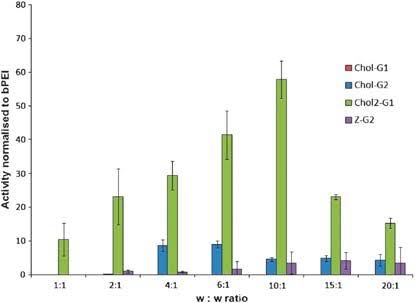Introduction to HEK 293 Cells
HEK 293 cells, also known as Human Embryonic Kidney 293 cells, are a widely used cell line in biological research and the pharmaceutical industry. These cells are derived from human embryonic kidney cells that were transformed with adenovirus 5 DNA. HEK 293 cells are easy to grow, maintain, and transfect, making them an ideal model system for various applications, including protein production, gene expression studies, and drug screening.
Origin and Characteristics of HEK 293 Cells
HEK 293 cells were first developed in 1973 by Frank Graham, a scientist at the University of Toronto. Graham transfected human embryonic kidney cells with sheared adenovirus 5 DNA, resulting in the incorporation of a small portion of the viral genome into the cellular genome. This transformation immortalised the cells, allowing them to continuously grow and divide in culture.
HEK 293 cells exhibit epithelial morphology and adhere to cell culture dishes. They have a doubling time of approximately 24 hours and can be easily maintained in standard cell culture media supplemented with fetal bovine serum (FBS) and antibiotics.
Advantages of Using HEK 293 Cells
HEK 293 cells offer several advantages that make them a popular choice for various research applications:
- High transfection efficiency: HEK 293 cells can be easily transfected with plasmid DNA or other nucleic acids using various transfection methods, such as lipofection, calcium phosphate precipitation, and electroporation.
- Protein production: HEK 293 cells are capable of expressing high levels of recombinant proteins, making them suitable for large-scale protein production and purification.
- Post-translational modifications: HEK 293 cells can perform most of the post-translational modifications required for proper protein folding and function, such as glycosylation, phosphorylation, and disulfide bond formation.
- Adaptability: HEK 293 cells can be adapted to grow in suspension culture, which is advantageous for large-scale production of recombinant proteins and viral vectors.
Transfection Methods for HEK 293 Cells
Transfection is the process of introducing foreign nucleic acids, such as plasmid DNA or RNA, into cells. Efficient transfection is crucial for the success of various applications, including gene expression studies, protein production, and gene therapy. Several transfection methods have been developed for HEK 293 cells, each with its own advantages and limitations.
Lipofection
Lipofection is a widely used transfection method that involves the use of cationic lipids to deliver nucleic acids into cells. The positively charged lipids form complexes with the negatively charged nucleic acids, allowing them to cross the cell membrane and enter the cytoplasm. Lipofection is relatively simple, efficient, and less toxic compared to other transfection methods.
Some commonly used lipofection reagents for HEK 293 cells include:
- Lipofectamine (Invitrogen)
- FuGENE (Promega)
- TransIT (Mirus Bio)
Calcium Phosphate Precipitation
Calcium phosphate precipitation is a classical transfection method that involves the formation of a calcium phosphate-DNA co-precipitate, which is taken up by the cells via endocytosis. This method is cost-effective and can be used for large-scale transfections. However, it is more sensitive to variations in pH and DNA quality compared to lipofection.
Electroporation
Electroporation is a physical transfection method that uses short electrical pulses to create temporary pores in the cell membrane, allowing the entry of nucleic acids into the cells. Electroporation is highly efficient and can be used for difficult-to-transfect cell types. However, it requires specialised equipment and can cause significant cell death if not optimised properly.
Viral Transduction
Viral transduction is a transfection method that uses modified viruses, such as lentiviruses or adenoviruses, to deliver genetic material into cells. Viral vectors are highly efficient and can achieve stable, long-term gene expression. However, the production of viral vectors is more complex and time-consuming compared to other transfection methods.
Factors Affecting Transfection Efficiency in HEK 293 Cells
Several factors can influence the transfection efficiency in HEK 293 cells, including:
Cell Density and Confluence
Cell density and confluence at the time of transfection can significantly impact transfection efficiency. Generally, cells should be in the exponential growth phase and around 70-80% confluent for optimal transfection results. Overly dense or sparse cultures may lead to reduced transfection efficiency and cell viability.
DNA Quality and Quantity
The quality and quantity of the plasmid DNA used for transfection can affect the transfection efficiency. High-quality, endotoxin-free plasmid DNA should be used to minimise toxicity and ensure consistent results. The optimal DNA amount depends on the transfection method and the size of the culture vessel, and should be optimised for each experiment.
Transfection Reagent and Protocol
The choice of transfection reagent and protocol can greatly influence the transfection efficiency in HEK 293 cells. Different transfection reagents may have varying efficiencies depending on the cell type and experimental conditions. It is essential to optimise the transfection protocol, including the ratio of DNA to transfection reagent, the incubation time, and the presence of serum in the transfection medium.
Serum and Antibiotics
The presence of serum and antibiotics in the transfection medium can affect the transfection efficiency. Serum may interfere with the formation of the transfection complex and reduce the transfection efficiency. Antibiotics, such as penicillin and streptomycin, can also negatively impact the transfection process. It is recommended to perform transfections in serum-free and antibiotic-free medium and add serum and antibiotics post-transfection.
Optimising Transfection Efficiency in HEK 293 Cells
To achieve optimal transfection efficiency in HEK 293 cells, several strategies can be employed:
Cell Culture Conditions
Maintaining HEK 293 cells in optimal culture conditions is crucial for successful transfection. Cells should be regularly passaged and maintained in the exponential growth phase. The use of high-quality cell culture media, such as Dulbecco’s Modified Eagle Medium (DMEM) supplemented with FBS and antibiotics, is recommended.
Plasmid DNA Preparation
Using high-quality, endotoxin-free plasmid DNA is essential for efficient transfection. Plasmid DNA can be prepared using commercial kits or by alkaline lysis followed by purification techniques, such as cesium chloride density gradient centrifugation or anion-exchange chromatography.
Transfection Optimization
Optimising the transfection protocol is critical for achieving high transfection efficiency. This includes:
- Determining the optimal cell density and confluence for transfection
- Optimising the DNA to transfection reagent ratio
- Adjusting the incubation time of the transfection complex with the cells
- Assessing the impact of serum and antibiotics on transfection efficiency
Co-Transfection with Reporter Genes
Co-transfecting HEK 293 cells with a reporter gene, such as green fluorescent protein (GFP) or luciferase, can help monitor transfection efficiency and optimise the transfection protocol. The expression of the reporter gene can be easily assessed using fluorescence microscopy or luminescence assays.
Applications of HEK 293 Cells in Research and Industry
HEK 293 cells have been widely used in various research and industrial applications, including:
Recombinant Protein Production
HEK 293 cells are an excellent platform for the production of recombinant proteins, such as antibodies, growth factors, and enzymes. The high transfection efficiency and the ability to perform post-translational modifications make HEK 293 cells suitable for the expression of complex proteins.
Gene Function Studies
HEK 293 cells are commonly used to study gene function and regulation. By overexpressing or knocking down specific genes in HEK 293 cells, researchers can investigate the roles of these genes in various cellular processes, such as signal transduction, cell cycle regulation, and apoptosis.
Drug Discovery and Toxicity Screening
HEK 293 cells can be used as a model system for drug discovery and toxicity screening. By expressing specific drug targets or reporter genes in HEK 293 cells, researchers can assess the efficacy and safety of new drug compounds. This cell line provides a valuable platform for evaluating drug interactions, mechanisms of action, and potential cytotoxic effects before proceeding to in vivo studies.
Vaccine Development
HEK 293 cells have also been employed in vaccine development, particularly in the production of viral vaccines. Their ability to support the replication of certain viruses makes them an ideal host for generating viral vectors used in vaccine formulations. This application is crucial for the development of effective vaccines against viral pathogens.
Gene Therapy Research
In gene therapy, HEK 293 cells serve as a valuable tool for studying gene delivery systems and evaluating the efficacy of therapeutic gene constructs. Their high transfection efficiency allows for the testing of various gene therapy approaches, including viral and non-viral methods, to optimise strategies for treating genetic disorders.
Conclusion
HEK 293 cells are a versatile and essential tool in modern biological research and biotechnology. Their unique characteristics, ease of transfection, and adaptability for various applications make them invaluable for protein production, gene function studies, drug discovery, and more. By optimising transfection efficiency and understanding the factors that influence it, researchers can maximise the utility of HEK 293 cells in their studies and contribute to advancements in medicine and science. As research continues to evolve, HEK 293 cells will undoubtedly remain a cornerstone of cellular and molecular biology.

